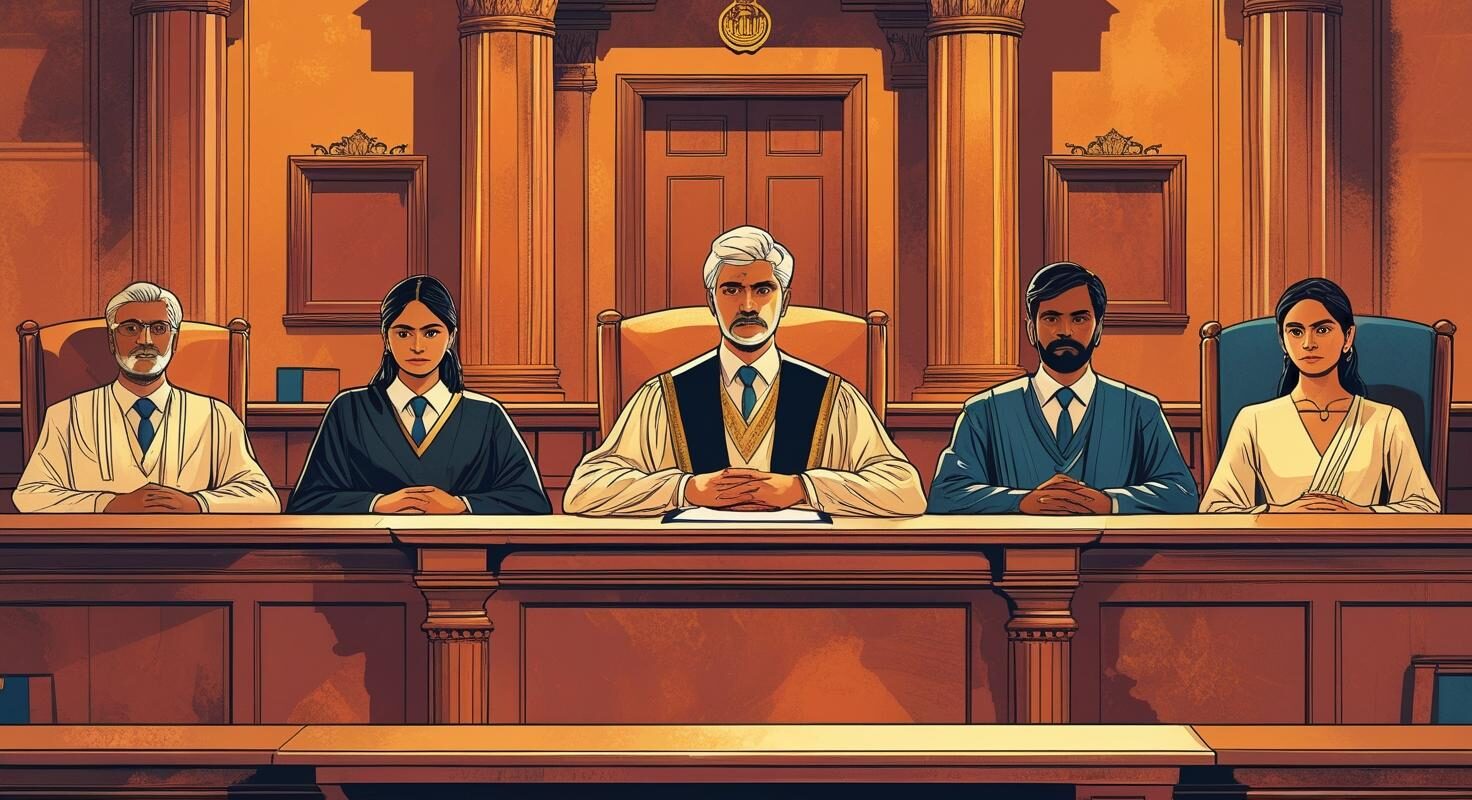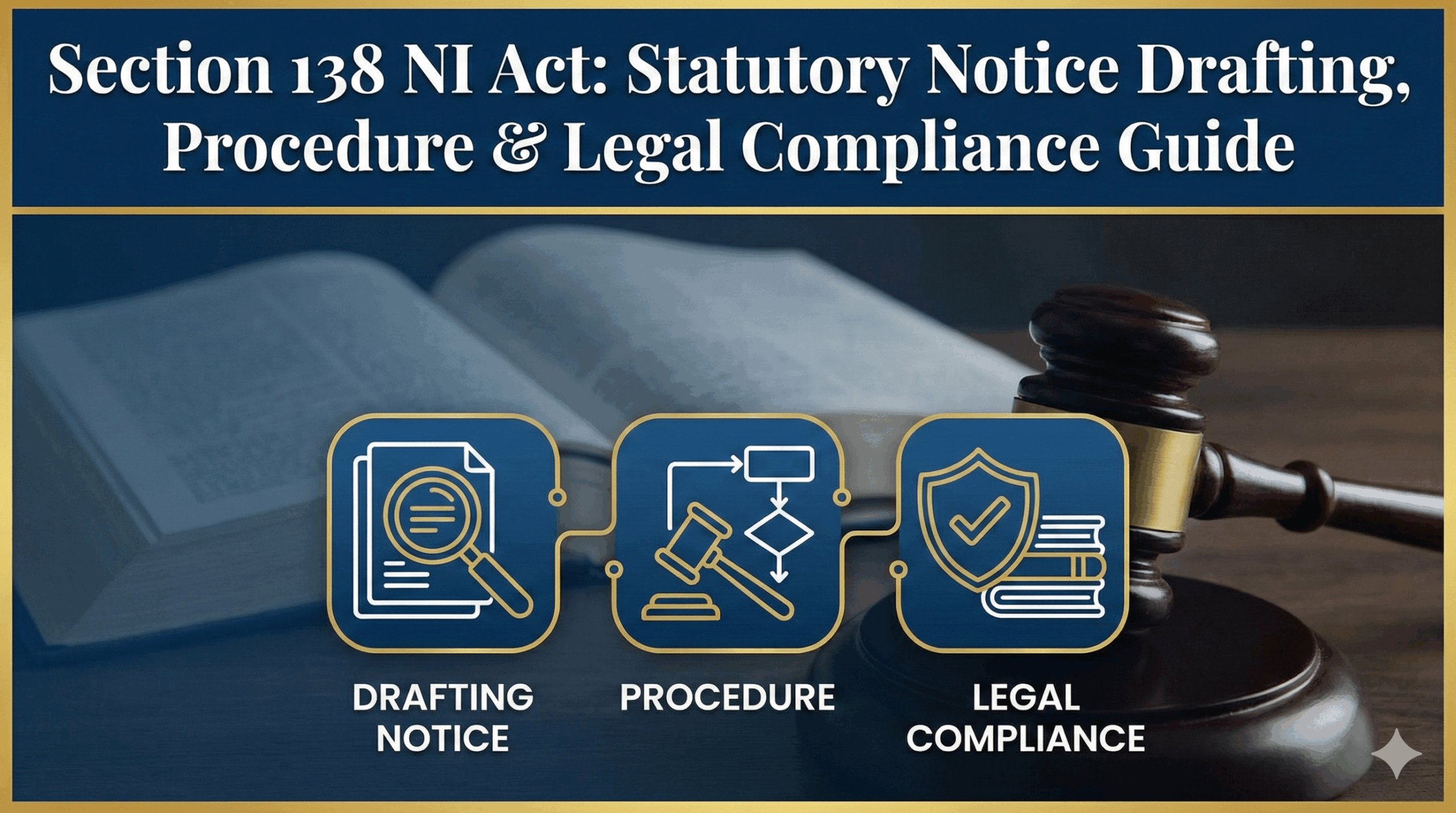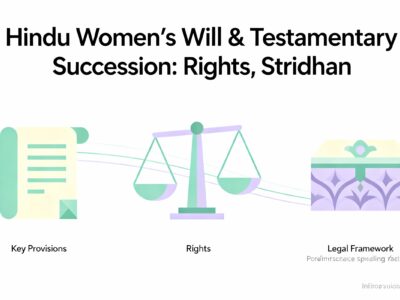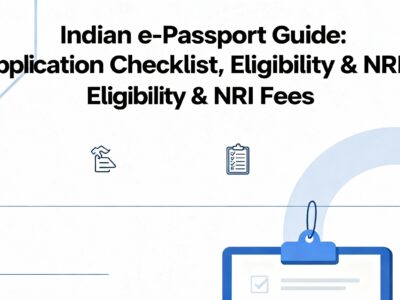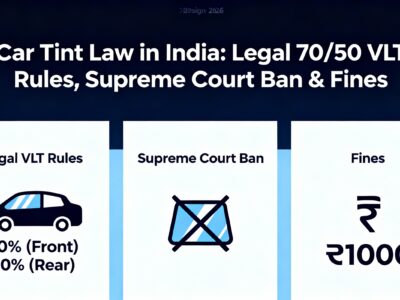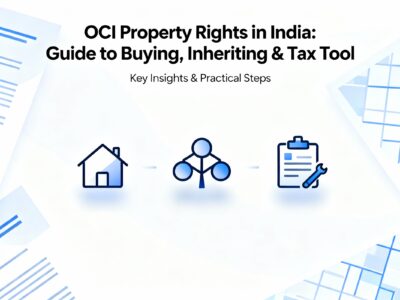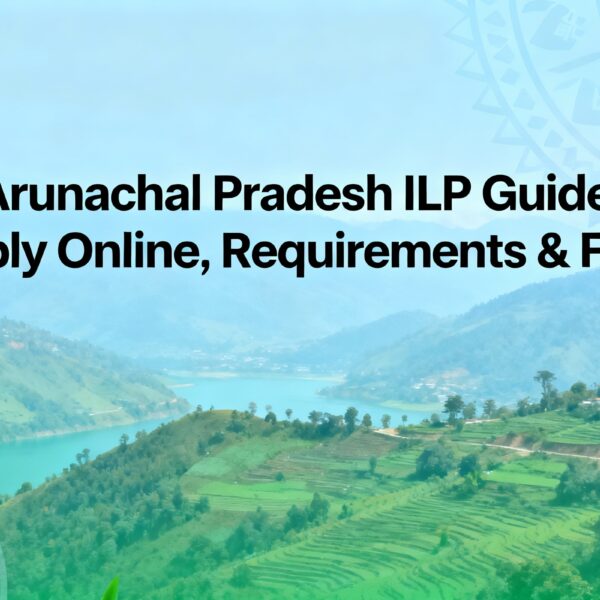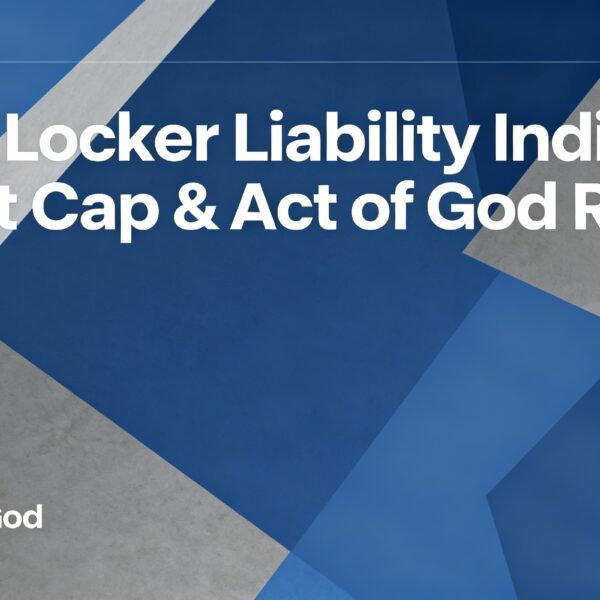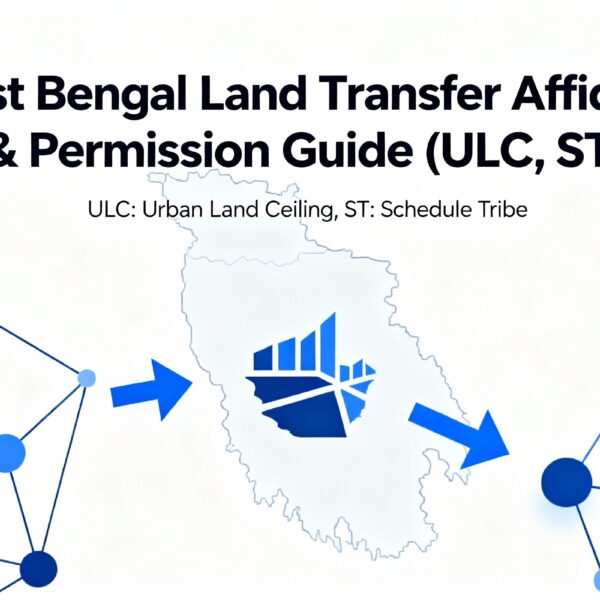The legal regulation of vulgar or obscene content, particularly when transmitted through social media for financial gain, operates within a complex and evolving framework in India. At its core, the challenge lies in defining what constitutes “obscenity” itself. This inherent ambiguity creates a landscape of legal uncertainty, framed by the constitutional tension between freedom of speech and the State’s authority to impose reasonable restrictions.
Content Disclaimer
The following content discusses sensitive legal topics, including obscenity laws in India. It is intended for informational and educational purposes only and is suitable for a mature audience. This is not legal advice.
eVaakil.com
Legal Deep Dive
Monetized Obscenity on Social Media: A Comprehensive Legal Analysis of Indian Law
Navigating the complex web of Indian statutes, judicial precedents, and digital regulations governing vulgar content and financial gain online.
Published on August 7, 2025
The Ambiguous Contours of Obscenity
The legal regulation of vulgar or obscene content, particularly when transmitted through social media for financial gain, operates within a complex and evolving framework in India. At its core, the challenge lies in defining what constitutes "obscenity" itself. This inherent ambiguity creates a landscape of legal uncertainty, framed by the constitutional tension between freedom of speech and the State's authority to impose reasonable restrictions.
Deconstructing the Legal Lexicon
Lascivious
Content that tends to arouse sexual desire or create lustful thoughts.
Prurient Interest
A shameful or morbid interest in nudity, sex, or excretory functions.
Deprave and Corrupt
An effect that can lead a person towards immorality or debase their character.
The Doctrinal Shift: From Hicklin to Community Standards
📜
Hicklin Test (1868)
Impact on the most susceptible person. Isolated passages could condemn.
👨👩👧👦
Community Standards Test (2014)
Judged by an ordinary person. Work as a whole. Must lack serious value.
Vulgarity vs. Obscenity: The Supreme Court's Evolving Jurisprudence
The judiciary has continued to refine the boundaries of obscenity, most notably by drawing a clear distinction between what is merely vulgar and what is legally obscene. In a significant 2024 ruling concerning the web series *College Romance*, the Supreme Court held that the use of profane or vulgar language, while potentially offensive, does not constitute obscenity unless it is intended to arouse sexual and lustful thoughts. The court clarified that obscenity relates specifically to material that appeals to prurient interests. Foul language, it observed, is often used in common parlance to express emotions like anger or frustration, rather than to provoke sexual desire. This judgment is of immense importance for content creators, as it provides a degree of protection against prosecutions based solely on the use of strong language, separating matters of taste from matters of law.
The "Public Good" Exception and Constitutional Framework
The legal framework for obscenity is not absolute. Article 19(1)(a) of the Indian Constitution guarantees the fundamental right to freedom of speech and expression. However, Article 19(2) empowers the State to impose "reasonable restrictions" on this freedom for "decency or morality". The entire body of obscenity law represents this restriction. The judiciary's role is to perform a delicate balancing act. Section 292 of the IPC provides that a publication cannot be deemed obscene if it is "proved to be justified as being for the public good on the ground that such book...is in the interest of science, literature, art or learning". This ensures that genuine works of art, literature, and science are protected from prosecution, even if they contain elements that some might find offensive.
The Statutory Arsenal
The legal regime is not contained within a single statute but comprises a multi-layered framework, primarily the Indian Penal Code (IPC), its successor the Bharatiya Nyaya Sanhita (BNS), and the Information Technology (IT) Act.
IPC vs. BNS: A Comparative Look
| Offence | IPC Provision | BNS Provision | Punishment (First/Subsequent) | Key BNS Change |
|---|---|---|---|---|
| Sale/Distribution of Obscene Material | Section 292 | Section 294 | 2 yrs / 5 yrs + fine | Includes "electronic form" |
| Sale/Distribution to Minors | Section 293 | Section 295 | 3 yrs / 7 yrs + fine | Age changed from 20 to 18 |
| Obscene Acts/Songs in Public | Section 294 | Section 296 | Up to 3 months or fine | Largely similar |
The IT Act: Regulating the Digital Realm
The IT Act is central to online obscenity, establishing a tiered system of offenses with escalating penalties.
IT Act Penalty Escalation
Ancillary Legislation: A Layered Approach
Indecent Representation of Women Act, 1986
Prohibits the depiction of women in a manner that is indecent, derogatory, or likely to corrupt public morality. It is frequently invoked alongside IPC/IT Act charges.
POCSO Act, 2012
A comprehensive law to protect children. Its provisions against child pornography work in tandem with Section 67B of the IT Act to create a stringent regime against CSAM.
The Nexus of Financial Gain and Criminality
Financial gain can be a direct statutory element, a powerful indicator of criminal intent, or an aggravating factor in prosecutions.
IPC Section 292
Directly criminalizes the "sale," "distribution," and "receiving profits from any business" involving obscene objects. Financial gain is a core element of the crime.
IT Act (Sec 67, 67A)
Financial gain is not a required element. However, evidence of monetization is used to establish intent (*mens rea*) and negate artistic merit defenses.
The Creator Economy's Legal Tightrope
The modern "creator economy" operates on revenue models that create a direct and often public link between content and financial gain. Platforms like YouTube and Instagram, as well as subscription sites, incentivize creators to maximize engagement, which can lead to producing "edgy" content. This creates a dangerous feedback loop where a creator's economic success becomes their primary legal liability. The very business model that platforms encourage produces a clear digital paper trail that can be used by a prosecutor to argue that the creator was running a business built on obscenity.
The Gatekeepers' Burden: Liability of Social Media Intermediaries
Platforms like YouTube and Instagram operate under a "safe harbour" provision (Section 79, IT Act), granting conditional immunity. This immunity is lost if they fail to perform "due diligence" as mandated by the IT Rules, 2021.
The IT Rules 2021: Due Diligence Checklist for Platforms
Publish rules & prohibit obscene content.
Appoint a Grievance Officer in India.
Acknowledge complaints in 24 hrs, resolve in 15 days.
Takedown of nudity/sexual acts within 24 hrs of complaint.
Enable "first originator" traceability for messaging apps.
Appoint Chief Compliance & Nodal Contact Officers.
Judicial Guardrails: The Shreya Singhal Precedent
The landmark 2015 Supreme Court case of *Shreya Singhal v. Union of India* remains a critical judicial backstop. The Court ruled that for an intermediary to have "actual knowledge" of unlawful content (which would trigger its obligation to remove it), it must be notified via a court order or by a government agency. This was intended to prevent platforms from being forced to censor content based on private complaints alone. A degree of tension exists between this judicial precedent and the IT Rules, 2021, which require platforms to act on user complaints for certain content without waiting for a court order. This area remains a point of legal debate.
Enforcement and Practical Realities
The procedural classification of these offenses as 'Cognizable' and 'Bailable' allows police to arrest without a warrant, acting as a significant deterrent.
The Path of a Complaint
💻
1. Citizen Report
Via cybercrime.gov.in or platform's Grievance Officer.
🚓
2. Police Investigation
FIR is filed if a prima facie case is found. Arrest can be made.
⚖️
3. Prosecution
Case is brought before the courts for trial.
Avenues for Redressal
The legal framework provides avenues for redressal for all parties. An aggrieved user's first step is the platform's Grievance Officer. If dissatisfied, they can appeal to the Grievance Appellate Committee (GAC), an independent body established by the government. Conversely, an accused creator can file a petition in the relevant High Court to quash the FIR, arguing the content is not obscene or is protected as art.
Practical Application: A Decision Tree for Content Creators
To simplify the complex legal tests, here is a decision tree to help content creators assess potential legal risks. This is a guide and not a substitute for legal advice.
Question 1: Does the content, taken as a whole, appeal to a "prurient interest" or is it "lascivious"?
Question 2: Does the content have serious literary, artistic, political, or scientific value (the "public good" exception)?
Question 3: Does the content contain "sexually explicit acts or conduct"? (IT Act, Sec 67A)
Final Check: Does the content involve a minor (under 18) OR is it being monetized?
Conclusion: A Compliance Roadmap
Navigating this complex legal environment requires a proactive approach from creators, platforms, and policymakers to balance free expression with public decency.
For Content Creators
- Use age-gating and trigger warnings.
- Understand the line between vulgarity and obscenity.
- Be aware that monetization creates evidence of intent.
- Seek legal vetting for sensitive projects.
For Social Media Platforms
- Rigorously comply with IT Rules 2021.
- Invest in culturally-aware content moderation.
- Publish detailed transparency reports.
- Promote voluntary user verification.

